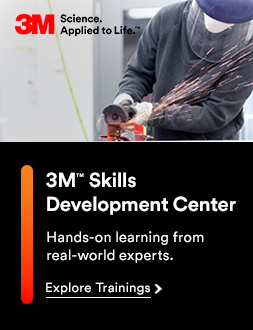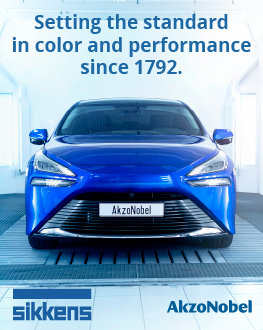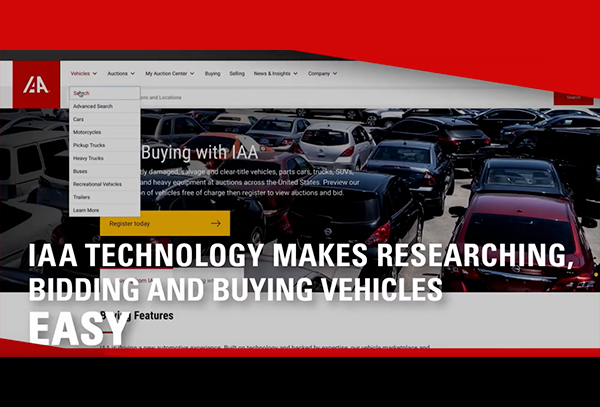By Jeff Sanford
Toronto, Ontario — April 23, 2018 — In this week’s AV Report: Self-parking VWs to arrive by 2020, training AV techs, the unclear future of collision investigations in the era of Big Data and much, much more!
VW is promising that the vehicles the company produces (which now includes the brands, Audi, Bentley, Porsche and Lamborghini) will come with an autonomous parking feature by 2020. According to a report the first version of the system will be available in “selected” parking garages. The system relies on pictorial guiding markers to help cars, and those guides will have to be in place for it to work. This first phase of the feature will see the self-parking cars being guided to a separate area so they, “don’t have to deal with the unpredictability of human drivers.” Later versions of the system will see “mixed” parking, where autonomous and piloted cars share the same areas.
The Google self-driving car company Waymo has started running self-driving trucks in the Atlanta area. The semis have human backup drivers. They are travelling on, “freeways and local roads to deliver server racks and other cargo destined for Google’s data centres. The Alphabet unit says the trucks will have the same technology and sensors as autonomous minivans that are being tested in the Phoenix area.”
The Center for Advanced Automotive Technology at Macomb Community College in Michigan is working with auto parts suppliers such as Bosch, Valeo and Magna to develop a curriculum for training up-and-coming techs to repair AVs. According to a media report about the program, “As future technicians are trained for coming work with automated vehicles, they’ll have an advantage: The vehicles will predict when failures of key components are imminent.” A former vice president of research and development at General Motors is quoted as saying, “The ability to get real time and historic data off these vehicles is hugely important. Thinking about fixing something after it’s broken is a mistake. You want to make these decisions from the data.” The story goes on to say that, “As autonomous and electric vehicles and mobility converge, service will be even more critical. Automated vehicles, especially those owned by fleets rather than individuals, will operate more hours of the day and accumulate twice as many miles as today’s cars and trucks before they are replaced.” Says the GM source, “We’ll have a much better understanding in three to five years what is required to do the service for the vehicles. Lifetime maintenance becomes very, very important, very different from traditional maintenance.” According to the story, “Suspension servicing will get the vehicle to 300,000 miles.”
Here in Canada, the omnibus spending bill approved on March 23 by Parliament includes $100 million for automated-vehicle research and development by agencies, local governments and academic institutions, according to a report.
Many are wondering about how it is AVs can be tested to ensure that they work properly. One suggestion is to implement, “A graduated certification model that builds on the principles for licensing human drivers would make a lot of sense.” Another neat idea concerning safety bubbled up in the AV scene recently: “A remote supervisor could oversee driverless cars as air-traffic controllers do for aircraft.”
A recent panel discussion in Portland, Oregon, discussed possible effects on commercial estate in the AV era. According to one of the panellists, the areas that will suffer most from new consumer habits that will arise in the age of self-driving cars will be, “car-oriented suburban retail.” According to one of the speakers: “Already, American retail is overbuilt by about 50 percent. With about 24 square feet per capita, the U.S. has by far the most retail space of any country in the world, with about 25 percent more than the next closest country, Canada. [About 7,500 malls] across the U.S., are struggling most with vacancies and declining profit. The overabundant big box and strip mall properties are increasingly overexposed as more Americans shop online and take advantage of fast delivery speeds.” As new delivery options emerge in the era of AV drones delivery speeds will rise. (Amazon already offers a two-hour delivery service in 30 U.S. cities) the big box stores will suffer. “One-hour delivery, for every U.S. market, is inevitable,” said one of the speakers. This could happen in just a few years. As well, “Self-driving technology stands to drastically reduce parking needs, cheapen delivery costs, and easily convey shoppers to locations they actually find desirable, such as walkable downtown areas where shopping feels like more of an ‘experience.’ Those are the kinds of commercial areas that will likely weather this coming retail storm. Worst off are car-oriented suburban strip malls and big-box stores, with huge swaths of these properties devoted to parking.” According to the speaker, “This could mean a lot of highly visible retail blight right along suburban highway corridors. [It also] paints a worrying financial picture for communities that lean on retail for badly needed tax dollars – not only from the lost stores themselves but also from the potential devaluation of surrounding properties.” The panel went on to discuss how “communities aren’t necessarily prepared for what’s here, let alone what’s ahead: more empty buildings, a harder economic punch from the lost retail, and heavier road impacts of increased goods delivery.” The recommendation of the panellists was that, “At the very least, new developments should be future-proofed against blight and hits to tax revenues.” According to one of the speakers, “Don’t build any parking garages you can’t adapt to other uses. Create internal grids and roadways on large new developments, so that you can fill in as things change.” Communities might also start considering how to reuse all that vacant retail space that will be freed up according to panellists. A report of the event suggested, “The sprawling malls of suburban America are turning into graveyards of its former retail kings – big grey boxes with ghostly logos etched onto the front. Could they be turned into housing? Data centres?”
Over the past couple weeks Tesla managed to get itself in trouble when it began leaking details of an investigation into a recent crash involving one of its cars that was said to be in automatic drive mode. According to a report, “All the data and information, which established early narratives, came not from the local police or the National Transportation Safety Board (NTSB), which is investigating the March 23 crash, but from Tesla Motors itself. The disclosures broke with long-standing protocols that stipulated companies working alongside investigators would let the agency release official information after meticulous review.” According to the media narrative, the company is “getting ahead of the investigation.” The NTSB has now taken the rare step of revoking Tesla’s status as a party to the investigation. Elon Musk, CEO of Tesla, threw a bit of a tantrum about it, claiming the NTSB is merely after headlines and is unconcerned with safety. The company pledged to lodge a complaint with Congress. A statement from the company said, “They were trying to prevent us from telling all the facts. We don’t believe this is right.”
A major feature in Car & Driver magazine takes a deep dive into the new issues around collision investigations of AVs. According to the feature, “Where investigators once had scant bits of information from cars in crashes, they now have dozens, if not hundreds, of data points sensed, collected, and stored in the moments before collisions by advanced driver-assist systems such as Autopilot and full self-driving systems.” A source with Safety Research & Strategies, a Massachusetts firm that provides research and analysis on motor-vehicle safety, is quoted as saying, “It’s a staggering new world, and the level of detail on this stuff is remarkable. You start finding data stored in taillight modules and say, ‘Wow.’ It’s a treasure trove of information. Who’s got the upper hand in understanding it all? Manufacturers.” It turns out the, “vast majority of the data was stored in a proprietary binary format that required the use of in-house manufacturer software tools for conversion into engineering units.” This was according to the Driver Assistance System Report that the NTSB prepared after the first crash of a self-driving Tesla in Florida two years ago. The story goes on to note that, “For decades, the NTSB has used a ‘party system’ in many of its investigations, in which it designates relevant manufacturers and organizations as parties to help the agency quickly glean technical expertise and specialized knowledge for its investigations. Tesla was a named party throughout [the Florida investigation].” Had the company not agreed to help with that data retrieval the NTSB would not have been able to read the data. Apparently there are also challenges around the capture of data from the car’s radar and cameras sensors that has not already processed by the algorithm’s that run Autopilot. It is unclear what will happen with the current investigations now that Tesla has been cut out of it. Or, as the story says, “In a case like the ongoing Mountain View investigation, it’s unknown what will happen when the relationship between a manufacturer and the NTSB has been formally severed.” It is a new world and no one seems certain of exactly how the era of Big Data as it applies to collisions is going to work out.“Potentially valuable data may exist in abundance, but the technical and regulatory means to understand it are very much undefined frontiers,” according to the story. More on this next week!







































